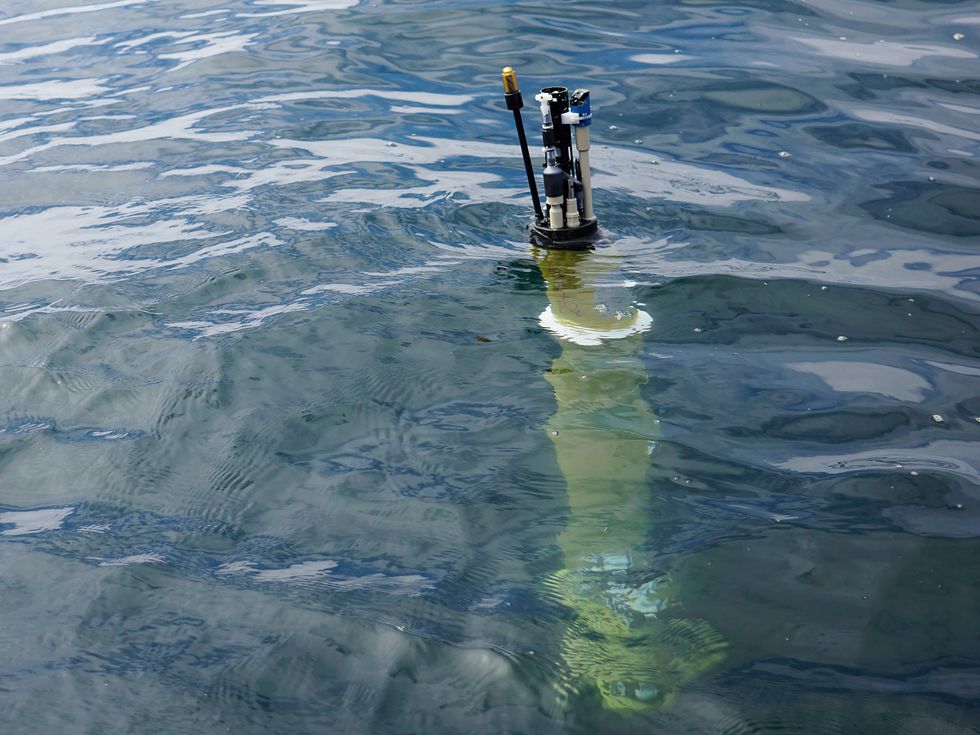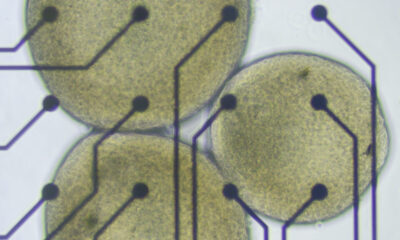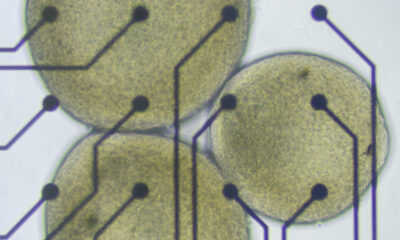Science
Ocean Robots Reveal Climate Change Threat to Carbon Storage

The ocean’s ability to store carbon is under threat due to rising temperatures, according to new findings from a study published in the journal Nature Communications. Researchers utilizing free-floating robotic devices have discovered that marine heatwaves are disrupting the carbon transport process, which is crucial for long-term carbon storage in deep ocean waters.
These autonomous robots are part of the Global Ocean Biogeochemical (GO-BGC) Array, overseen by the Monterey Bay Aquarium Research Institute (MBARI) in California. They continuously collect data from the depths of the ocean, specifically monitoring the biological, chemical, and physical conditions that influence the ocean’s metabolic processes. The study emphasizes the importance of these robotic devices, which have been deployed worldwide, to understand the ocean’s response to climate stressors.
Understanding the Ocean’s Carbon Cycle
The ocean plays a vital role in regulating carbon levels in the atmosphere, acting as a significant carbon sink. The BGC-Argo floats gather essential data, including oxygen levels and nutrient concentrations, which help scientists understand how deep carbon-rich particles sink. Research shows that while carbon in the Gulf of Alaska rarely descends deeply before re-entering the atmosphere, the Southern Ocean allows for deeper carbon storage, making it a more effective carbon sink.
Historically, tracking the full extent of the ocean’s carbon transport has been challenging. Satellite sensors can only provide information about surface conditions, while ship-based surveys are limited by time and cost. As Ken Johnson, a senior scientist at MBARI and co-author of the study, points out, the floats operate continuously, collecting vital data regardless of weather conditions. “You just can’t understand how the ocean responds to multiple heatwaves by going out on a ship for a couple of weeks,” he explained. The autonomous floats provide year-round monitoring, offering insights that would otherwise be unattainable.
The Role of Autonomous Robots
The BGC-Argo floats follow a systematic data-collection cycle. They dive to about 1,000 meters, drift for ten days, and then descend to depths of 2,000 meters before ascending to the surface. Equipped with a buoyancy pump and advanced sensors, these robots capture continuous measurements and transmit data via the Iridium satellite network. The floats post data publicly within a day, contributing to global efforts to monitor ocean health.
Funded by a US $53 million grant from the National Science Foundation awarded in 2020, MBARI has successfully developed and calibrated the floats’ key sensors, including the SeaFET Ocean pH technology. Each float is designed for approximately 250 dive-drift-rise profiles, lasting up to seven years, although about 5 percent are lost annually due to various factors.
In their recent study, MBARI researchers used data from the floats to investigate the impacts of a significant North Pacific marine heatwave, known as The Blob, which occurred from 2013 to 2015, and its successor in 2019 to 2020. They collaborated with Fisheries and Oceans Canada to analyze plankton pigments and environmental DNA, crucial indicators of the ocean’s carbon storage mechanism.
Johnson emphasized the importance of understanding how deep carbon from plankton sinks, as this determines the carbon’s longevity in the ocean. If organic particles only descend to 100 meters, they are quickly converted back into carbon dioxide and reintroduced into the atmosphere. Conversely, if they sink to depths of 2 kilometers, they can remain out of contact with the atmosphere for hundreds of years.
The findings suggest that marine heatwaves significantly alter ecosystem structures, affecting plankton dynamics and, consequently, carbon export. Johnson pointed out that changes in these processes could impact the ocean’s ability to provide essential services, such as seafood production and heat absorption.
As researchers continue to explore the data collected by these robotic devices, they are applying machine learning techniques to uncover new biogeochemical insights. A recent study published in Global Biogeochemical Cycles revealed that nitrate production in the Southern Ocean has been increasing for over two decades, highlighting the region’s critical role in global nutrient distribution.
Despite these advancements, the future of the BGC-Argo program remains uncertain. The funding from the NSF grant is set to expire this year, and Johnson noted that no additional funding has been secured to continue this essential research. The loss of financial support could hinder ongoing efforts to monitor and understand the health of the oceans as they adapt to the impacts of climate change.
-

 Technology4 months ago
Technology4 months agoDiscover the Top 10 Calorie Counting Apps of 2025
-

 Health2 months ago
Health2 months agoBella Hadid Shares Health Update After Treatment for Lyme Disease
-

 Health3 months ago
Health3 months agoErin Bates Shares Recovery Update Following Sepsis Complications
-

 Technology3 weeks ago
Technology3 weeks agoDiscover 2025’s Top GPUs for Exceptional 4K Gaming Performance
-

 Technology4 months ago
Technology4 months agoDiscover How to Reverse Image Search Using ChatGPT Effortlessly
-

 Technology2 months ago
Technology2 months agoElectric Moto Influencer Surronster Arrested in Tijuana
-

 Technology4 months ago
Technology4 months agoMeta Initiates $60B AI Data Center Expansion, Starting in Ohio
-

 Technology4 months ago
Technology4 months agoRecovering a Suspended TikTok Account: A Step-by-Step Guide
-

 Health4 months ago
Health4 months agoTested: Rab Firewall Mountain Jacket Survives Harsh Conditions
-

 Lifestyle4 months ago
Lifestyle4 months agoBelton Family Reunites After Daughter Survives Hill Country Floods
-

 Technology3 months ago
Technology3 months agoUncovering the Top Five Most Challenging Motorcycles to Ride
-

 Technology4 weeks ago
Technology4 weeks agoDiscover the Best Wireless Earbuds for Every Lifestyle



















